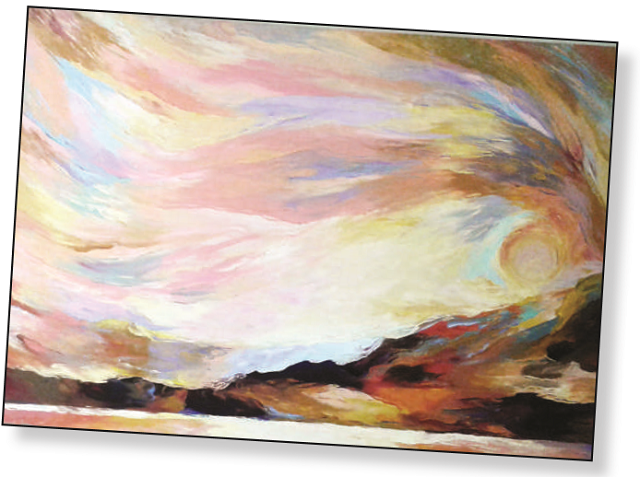
Vincent Willem van Gogh, the Dutch post-impressionist painter, is easily among the most famous and influential figures in the history of western art.
In just over a decade, he created about 2100 artworks, including around 860 oil paintings, most of them in the last two years of his life. He is credited for having laid the foundations of modern art.
When Ugandan painter Paulo Akiiki visited Van Gogh’s museum in Amsterdam some years back, the impact on his aesthetic sensibilities was dramatic and decisive. Today, Akiiki has become a modern day incarnate of his Dutch idol. Of the thousands of works he saw, it seems the famous `Starry Night’ had the most bearing on the Ugandan. The traits of this work have a permanent stamp of approval on nearly all Akiiki’s works for the past several years.
Working with the ferocity of a Renaissance master in his spacious Ujuzi Art Studio in Bukoto, there is sufficient indication that Akiiki is taking his practice seriously, as though with intent to out-perform his mentor. But can he pit himself against a giant of history who assumed a larger-than-life reputation long after his demise? Certainly not; he would be wise enough to know that such a futile attempt would be tantamount to chasing a mirage or, worse still, falling into a hallucination. However, with 18 years of professional practice already under his sleeve, Akiiki, a graduate of the Makerere art school has been working desperately to extricate himself from the Dutchman’s jinx and assume an original identity but he admitted that he has neither succeeded nor does he expect to. What is evident though is that he is having the time of his life walking in the footsteps of history.

He has established a style of applying bold colours and dramatic, impulsive and expressive brushwork using a hot palette of yellows, reds and browns. But instead of his model’s moon, Akiiki uses the sun to create sunny days as the major contrast from Van Gogh’s `starry night’. So ‘hot’ are Akiiki’s paintings that nearly all of them have the sun cutting through the undulating hills in the background. These are painted against a foreground of elongated and abstract human figures or trees in their absence. He then introduces reflections of the subjects as shadows in the backgrounds. The impastos rough textures are a favourite for his collectors. He uses a palette knife to place thick chunks of paints onto the canvas with maximum effect. The monotony of Akiiki’s themes could be his most undoing in the attempt to scale the heights among the spit and polish of the art world. The rest are rendered in oil on canvas acrylic on board.
Akiiki has been collected by all manner of people from foreign galleries to tourists, expatriate community, diplomats, hotels and now the Ugandan middle class is the latest on his burgeoning list. He has also been exhibited by reputable galleries on nearly all four continents in the last one and a half decades. Sadly, Van Gogh’s suicide at 37 followed years of mental illness and poverty. He is said to have sold only one painting which was bought by his brother Theo van Gogh. This makes Akiiki a more successful artist than his counterpart, as far as their living careers are concerned.
****
editor@independent.co.ug
 The Independent Uganda: You get the Truth we Pay the Price
The Independent Uganda: You get the Truth we Pay the Price


